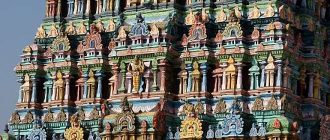The Indian saree is an art form in and of itself. Though there are numerous methods of draping them around the body, one or two styles predominate. Saris may be quite simple, or they may have very intricate embroidery and other embellishments such as
The image that often comes to mind when you think of the Indian saree is of a dignified Indian woman draped in the long flowing cloth that has served sartorially in India for thousands of years. The simple, beautifully draped garment is beautiful, and has been adapted to every occasion and every occupation. Women officers in the Indian armed forces wear a green saree over top of a closely fitted, olive colored top known as a choli. It may be the most elegant armed forces uniform in history.
But while people often think of the aesthetics of the saree, they are actually quite practical garments for the climate and culture of Indian subcontinent.
In addition to the choli, the woman also wears a petticoat with elastic, and the wrapping of the saree begins with tucking in the leading end of the sari into the petticoat waistband. The leading end of the saree is usually different from the end that shows. The end of the saree that shows is often beautifully decorated, while the other end is rather plain. Depending on the height of the wearer and the style of draping used, the sari is from four to nine meters long.
The most popular draping style for today’s saree is called the nivi style. This drape starts with an end of the saree tucked into the petticoat waistband. The garment is wrapped around the lower body once, gathered evenly just below the navel, and tucked into the waistband of the petticoat. It is wrapped again around the waist, with the loose end draped across the shoulder. The loose end, called the pallu, is worn across the right hip, then over the left shoulder.
There are many variations on the nivi draping style, and many women choose a style that complements their figure.
Women in India are not the only ones who wear sarees. Women in Bangladesh wear them too, and they are usually made of lightweight silk or cotton. They are not as common these days in Pakistan, except as formal wear for weddings. Most of the women who wear sarees as “everyday” wear are older women of Karachi who wore it before India was partitioned. There are, however, younger generations of women who have an interest in the saree too. In many places, the saree is seen as Hindu dress, and even as unpatriotic.
Sarees are also popular in Sri Lanka, and they are usually draped in the classic Nivi style mentioned earlier, though women who live in the hilly region of Kandy have a style of draping that is named Kandyan after them.
The Indian saree is a garment that has stood the test of time. Not only is it beautiful, it is also practical and simple, and can be adapted to any number of figure types and most any activity.





